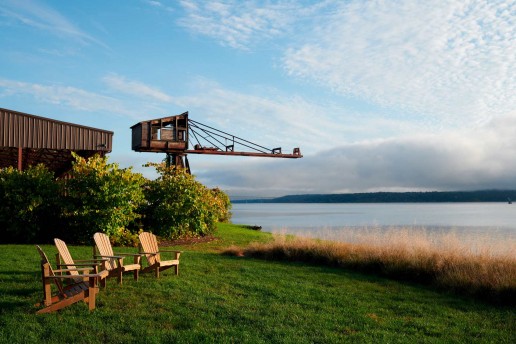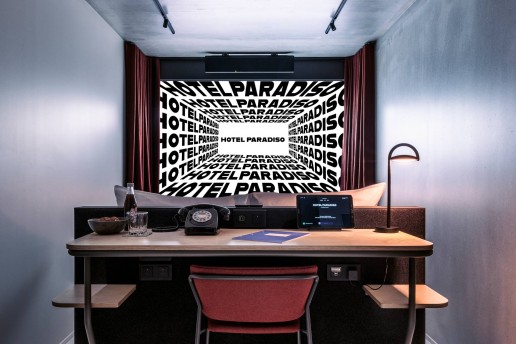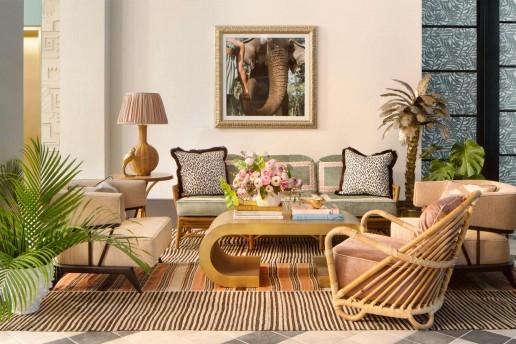Feature: NoMad London
As Sydell Group’s NoMad brand makes its London debut, Sleeper speaks to the owner, operator, architect, designer and contractor to gain exclusive insight into developing and delivering a luxury hotel within a listed building.
It was way back in 2008 when Sleeper first announced that planning permission had been granted to transform Bow Street Magistrates’ Court into a hotel. It had already taken three years of back-and-forth with Westminster Council to get the scheme approved, and unbeknownst at the time, the road ahead wouldn’t run smoothly either, with a global financial crisis and devastating pandemic to contend with, not to mention the challenges of working in a listed building. Over the years, the property has changed hands several times, the lead designer role has been won and lost, and there’s been long stretches of inactivity, leaving many to wonder whether the grand dame would ever see the light of day.
It wasn’t until 2016, when Doha-based investment firm BTC stepped in, that the project finally began to move forward. With a portfolio of hotels, shopping malls and entertainment complexes across the Middle East, the group were looking to make a name for themselves in the UK, and so set up a London office from where they snapped up Soho Coffee Co and artisan bakery Euphorium. A landmark hotel was also on the wish-list, with Mehdi Ghalaie, BTC’s UK Managing Director, on the lookout for something special. “This was the sixth asset I looked at,” he explains, recalling the first time he set eyes on the Grade II-listed property. “It was unoccupied at the time and falling apart. We knew that we had to breathe life into its walls and do the building justice, especially with the history it has. Thankfully we have partners who have the fortitude and the vision to see what we could create.”
The history of the building is indeed rich, for it was within the walls of the Magistrates’ Court and adjoining police station that Oscar Wilde spent the night having been arrested for committing indecent acts, the suffragettes were trialled, and the Kray twins were charged with murder. Their stories are now told in a new museum that sits alongside the hotel, where visitors can experience life in the cells or stand in the original dock that was unearthed during the redevelopment.
With their bid under way, BTC began their search for an operator who could bring a certain prestige to the project, capable of raising the bar, particularly in terms of the F&B experience. “A lot of people approached us, but I was adamant that it required an operation as unique as NoMad’s given the F&B element that we wanted to create,” explains Ghalaie, hinting that there was only really one name in the running. “I had admired the NoMad brand since I first stayed at the New York property; it’s the magic of everything they represent that appeals to me. I think the standard of the product is unparalleled.”
By a stroke of luck, Sydell Group were also in search of their next big London project, having already made their mark on the capital with The Ned, developed in collaboration with Soho House. With NoMad hotels running successfully in New York, Los Angeles and Las Vegas, the group had aspirations to expand outside of the US, taking the brand’s mix of vibrant public spaces and stand-out food and beverage offerings to new destinations. “We have always thought that London would be the perfect place for NoMad and began our search for the right property soon after we opened the original NoMad in New York,” says founder Andrew Zobler, who has something of a knack for transforming architecturally meaningful buildings into compelling hotel products. “It took a long time to find the perfect building to house NoMad but I think we did it,” he continues. As the creative force behind Sydell Group’s hotels, Zobler was the one who decided on a fresh approach for the interior design, selecting Roman and Williams to take the lead over Jacques Garcia, who has been responsible for the rich, seductive schemes at all three NoMads. The New York-based design duo are no stranger to Sydell Group however, with this marking their fifth collaboration with Zobler following the original concept and brand identity of Freehand and its implementation at all four outposts. “We love working with Garcia but thought it would be good to work with our other long-time collaborators to take a fresh look at the brand and in particular to bring a New York perspective to the project,” he notes, a fitting choice given that this is the first hotel in London for both the NoMad brand and Roman and Williams. This idea of the New Yorkers landing in London has gone on to inform the entire narrative, as Zobler explains: “The brief was to look at what was fundamental to the brand and make sure we carried that through while exploring a new conversation between New York and London and taking our cues from the history of the building.”
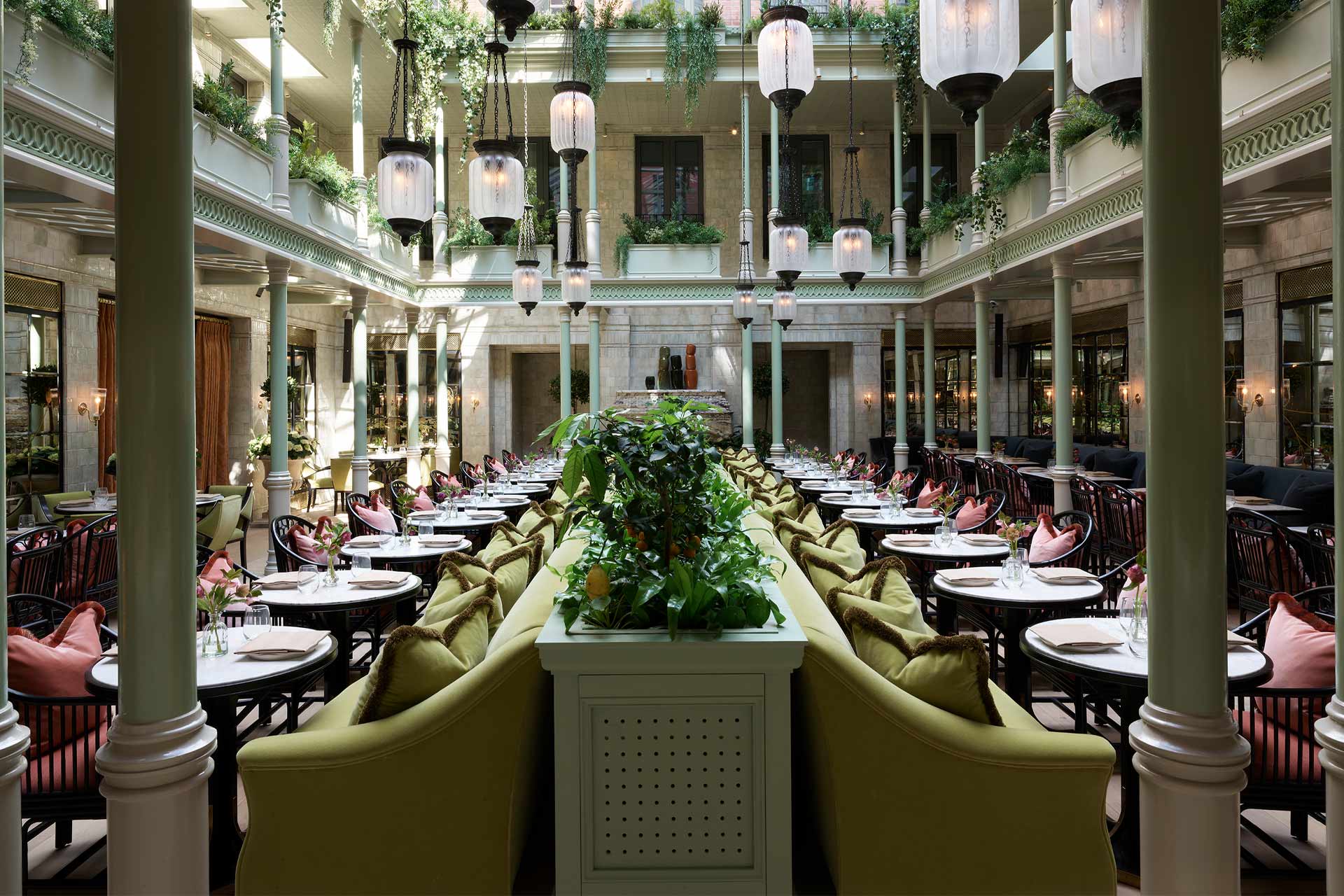
While Zobler brought his creative genius, it was Stuart Adolph, Sydell Group’s Senior Vice President of Development, who became the man-on-the-ground in London, collaborating closely with the owner and design teams every step of the way. Not only did Adolph deliver The Ned, but he has history with Bow Street, having viewed it for three other operators through his career, the first time being in the mid-2000s when it first came to the market. Joining Sydell Group in 2013, Adolph has been instrumental in bringing the property to life, right from the early days of looking for the site. “It was always the ambition to grow NoMad outside of the US,” he explains. “It was logical to look at London and there were a number of other properties we explored before finding this one.”
Armed with the belief that Bow Street would make the perfect NoMad, Adolph set about convincing BTC to modify the existing plans in favour of a larger F&B footprint. As it turns out, they didn’t take much convincing, with the owners confident in Sydell Group’s expertise. “It’s been a good match,” states Adolph of the ensuing partnership. “From the beginning, they said to us: we trust you to design our hotel, we trust you to build it and we trust you to operate it. What more can you want from an owner?”
The collaborative nature of the project is one that all parties have commended and it’s clearly an approach that has brought results. “We’ve worked really well as a team that’s very much the style I try to adopt in all projects,” says Adolph. “I like to get to know the design team and contractors to gain a better understanding of how things get built and how people react to design. It’s very much a hands-on approach.”
The sentiment is one that’s shared by EPR, who were appointed lead architect on the project and had also been involved in one of the earlier, unsuccessful schemes. “The previous scheme was quite different to the one we’ve got now,” explains Mark Bruce, Director of Hotels at EPR. “The atrium was a completely unactivated space with a reflection pool in the middle, so the first thing BTC and Sydell did was to ensure this would be a true NoMad with the right balance of F&B and bedrooms – that’s when the project came to life; from the get-go, everything just made sense.”
Having worked with Sydell Group on delivering The Ned, Bruce had already established a rapport with Adolph and was delighted to be asked by BTC to get involved. “It’s one of those projects that so many owners, operators and developers have looked at over the years; I myself drew my first plan for this in 2006,” he explains. “With BTC’s involvement, there was an owner that really loved the building, they wanted to do something meaningful, and that’s what this project needed.”
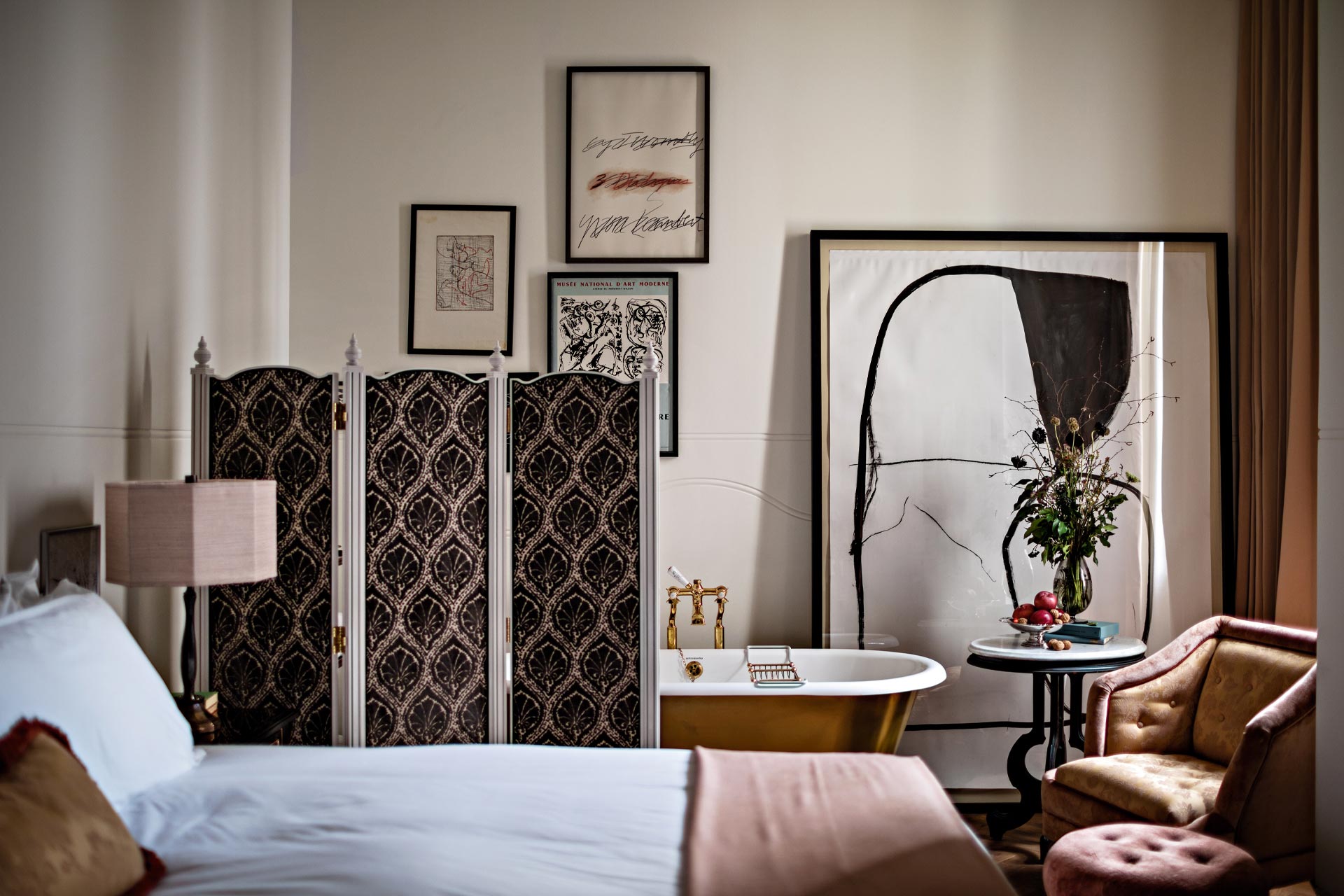
EPR’s role involved working closely with BTC and Sydell Group to increase the front-of-house spaces in a way that would make a successful NoMad, yet also be in keeping with regulations imposed by the local authorities. “In a hotel of this nature, the architectural spatial planning is key; we got the chance to expand on our original scheme and push the building harder than it had been in previous iterations to secure the additional programming that NoMad needed,” says Bruce. “What was also unique for us in this project, was that because the operator was already confirmed, we were able to draw up the restaurant, bar and back-of-house spaces with certainty as to what Sydell Group needed to make the hotel a real success.”
A large part of that success is down to the The NoMad Restaurant & Bar, which occupies a soaring triple-height atrium at the heart of the hotel. Evocative of an Edwardian greenhouse, the sunken space – the result of excavation works – is flooded with natural daylight and brought to life through the verdant plantlife – a nod to the Covent Garden location – running through the centre and hanging over balconies. By night, the space takes on an entirely different persona thanks to a carefully considered lighting scheme by Hoare Lea, developed to complement the scale of the space and accentuate the architecture. Central to the look are the pendants that hang at differing heights, custom-designed by Kalmar who produced over 1,000 pieces for the hotel in total.
The addition of the atrium was undoubtedly a wise move, with the space fast becoming a crowd-pleaser for both its design scheme and the creative cuisine. It also serves to establish another link with the New York property, which has its own atrium, albeit on a smaller scale. A more casual eatery comes in the form of Side Hustle, NoMad’s take on the British pub, which is a vision in mahogany and leather set in the building’s former police station, and still to come is Common Decency, the brand’s first-ever late night cocktail lounge.
A tour of the hotel with Adolph reveals signature NoMad touches such as the paravent behind the check-in desk, upholstered here in a Watts of Westminster fabric for a London twist, and the brown leather headboards in the guestrooms, a repeat of those seen in the New York outpost. In terms of public spaces, The Library – described as the living room of the hotel – is a NoMad staple, though its curation of books is very much in line with the brand ethos of being rooted in the locale. Crime is a prominent theme along with travel and design, and thanks to the hotel’s location opposite the Royal Opera House, books on the arts, theatre and music also make an appearance. There are other links to the surrounding area too, notably the stencilled artworks on mirrors in the restaurant, created by out-of-work scenic artists commissioned while the Opera House was temporarily closed.
The New-York-comes-to-London narrative continues throughout Roman and Williams’ scheme, with co-founders Robin Standefer and Stephen Alesch bringing drama and theatricality along with a bohemian spirit. Moments of femininity juxtapose the masculine character of the architecture, while a level of layering is decidedly NoMad. As with all NoMad hotels, the identity is grounded in the idea that the hotel is a home, layered with the stories and spirit of its inhabitants – a vision of a life artfully lived. “With all our projects we want people to feel comfortable and curious,” explains Alesch. “The NoMad is meant to be beautiful, bohemian and evocative all at once. The building is so powerful and remarkable that you are embraced by its strength, while the rich and textured interiors balance the bones. There is a tension between this muscularity and softness that creates a powerful narrative for the guest.”
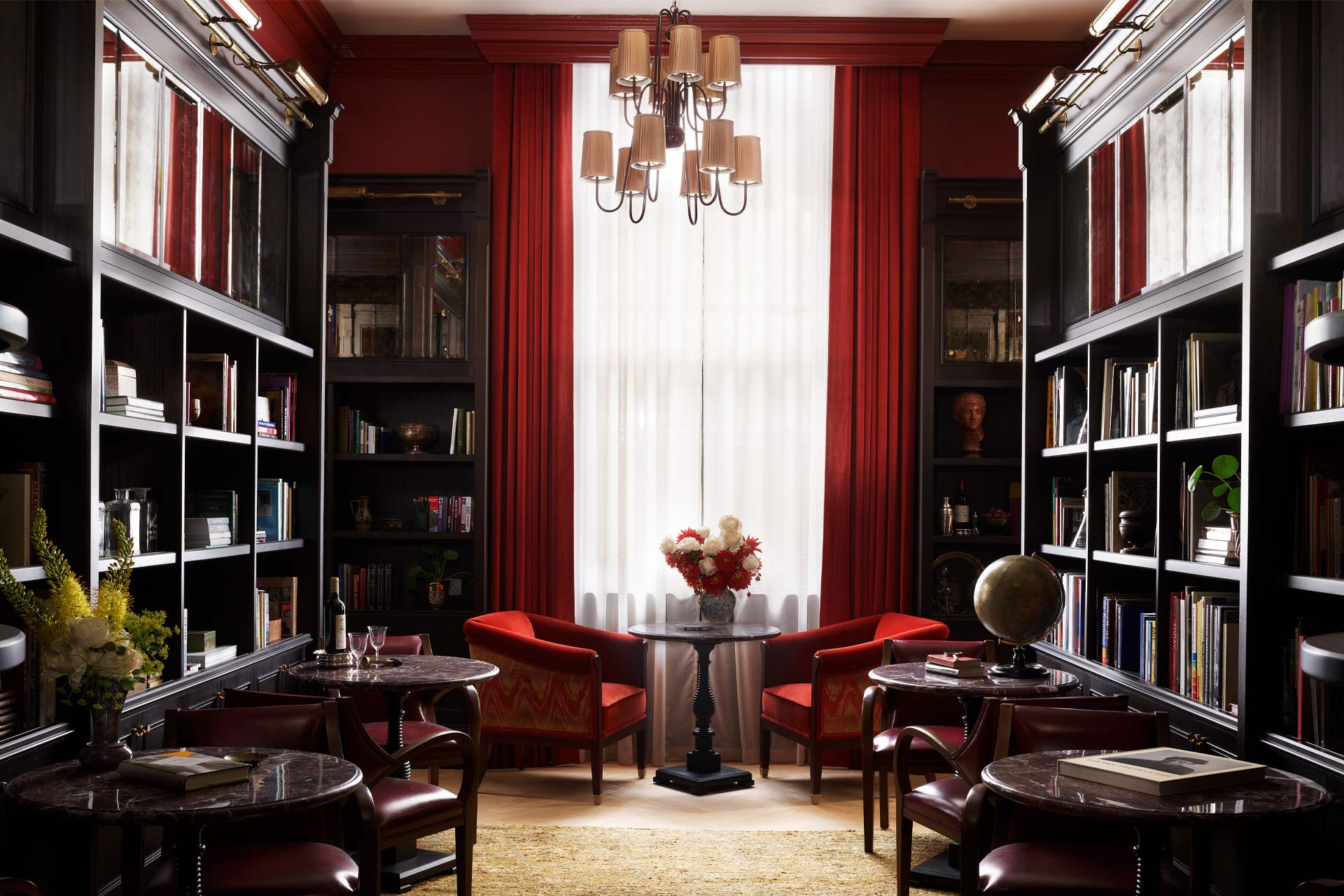
The selection of FF&E plays a starring role in the project, with tasselled pouffes, plush sofas and freestanding clawfoot bathtubs all part of the mix. Taking the lead on sourcing, Rachel Carr, Sydell’s Vice President of Procurement, scoured antique markets for unique finds, and worked closely with manufacturers on custom-made pieces. “Most items are antique or bespoke to ensure we met the aesthetic the design team were looking for,” explains Carr. “We wanted to see some new and exciting pieces in the hotel, with different uses of finishes, fabrics and shapes, while adding in vintage pieces is very much a NoMad trait and gives us those unexpected moments.”
Carr points out the flame-stitch armchairs in The Library, made by Interdecor, amongst her favourite pieces, along with the dramatic Preciosa chandeliers in the Magistrates’ Court. In the guestrooms, stone mosaic bathrooms, marble fireplaces and custom Lelievre damask make a statement, while the public spaces see dark timber panelling, inset antique mirrors and an assortment of rugs top oak floors by Havwoods.
The artworks are worthy of a mention too, with a 1,600-strong collection throughout the public spaces and guestrooms – some of the suites boast over 40 pieces alone. Be-poles, another of Sydell Group’s long-time collaborators, was tasked with curating the collection, which celebrates the influence of post-war American art and European avant-garde. Highlights include masterpieces by Caroline Denervaud, whose approach combines dance and painting, and a series of vintage portraits extracted from the Bow Street Police Station Archives. And in the Magistrates’ Court, now repurposed as an events space, a large-scale mural by French artist Claire Basler – which took four weeks to paint by hand – conveys the magical moments at dusk to ethereal effect.
Responsible for turning the concept to reality, main contractor Beck won the project in 2018 having been able to showcase their expertise at London projects such as The Lanesborough and Rosewood. And in a neat link, the team also completed the restoration of Belmond Cadogan, where Oscar Wilde was arrested before being taken to Bow Street. Much like others working in the capital’s hotel market, Director Edward Kent had spotted the potential of the building, but knew it would come with its challenges. “The biggest challenge, as always on a project like this, was trying to get modern services into a heritage building while meeting the designer’s expectation,” he explains. “What we hadn’t anticipated was the complete shutdown of the site, which was the right thing to do but had a 12-week impact owing to the measures we took to reopen safely.”
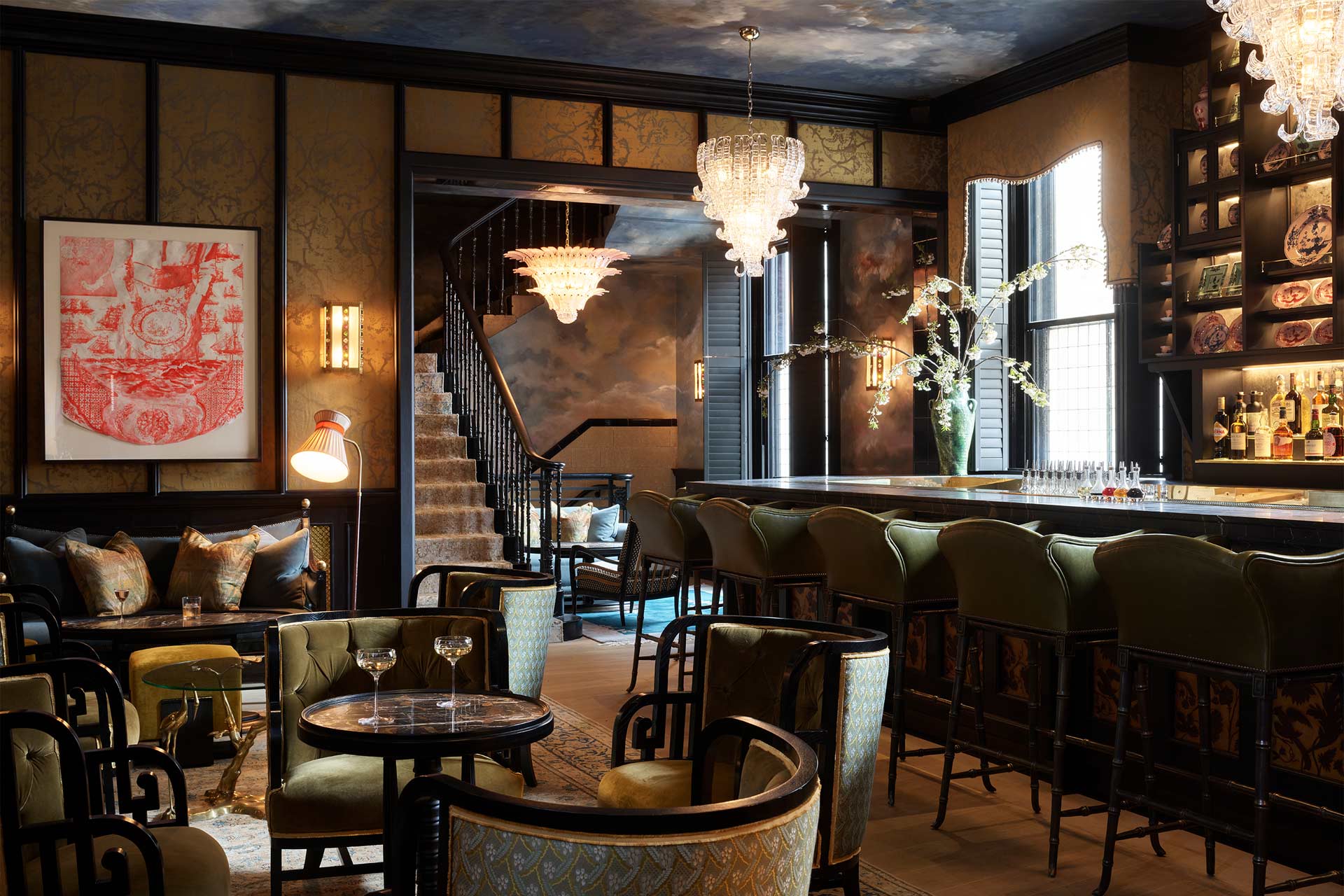
Beck’s role was far-reaching, involving the timber work of the mansard roof, cleaning up the façade and construction of the timber-lined staircase that cuts across multiple floors and marks the intersection between newbuild and heritage. There were extensive fibrous works too, which involved restoring water-damaged mouldings in the Magistrates’ Court and matching old cornicing with new, while the joinery throughout was produced in Beck’s own UK workshop, meaning that changes and bespoke solutions could be mocked-up and arrive on site within days.
For Kent, the project has been a career highlight, which he accredits to the communication across all parties. “It comes down to the project team, the client team and the way in which everybody worked together to deliver the job,” he notes. “Everyone listened to one another and understood the end-goal – there was an open-door policy.”
It’s clearly a collaboration that has yielded results, and one that both owner and operator are particularly proud of. “It’s truly magical,” states Ghalaie of the finished product. “We’re very grateful to the team and fortunate to be on this journey with them.”
The final word goes to Zobler, who was in London to see the fruits of his labour. “I am thrilled with the outcome. It is very much a NoMad but takes the brand off in a whole new fresh direction too. It is always wonderful to see your work come alive when people start to inhabit the design. That is the most rewarding part of the experience.”
EXPRESS CHECK-OUT
Owner: BTC
Operator: Sydell Group
Architecture: EPR Architects
Interior Design: Roman and Williams
Lighting Design Hoare Lea
Art Consultant: Be-poles
Main Contractor: Beck
Structural Engineer: Elliott Wood Partnership
www.thenomadhotel.com
CREDITS
Words: Catherine Martin
Photography: © Simon Upton (unless otherwise stated)
Related Posts
21 May 2021
Feature: Hutton Brickyards, New York
20 May 2021
Feature: Hotel Paradiso, Paris
19 May 2021

